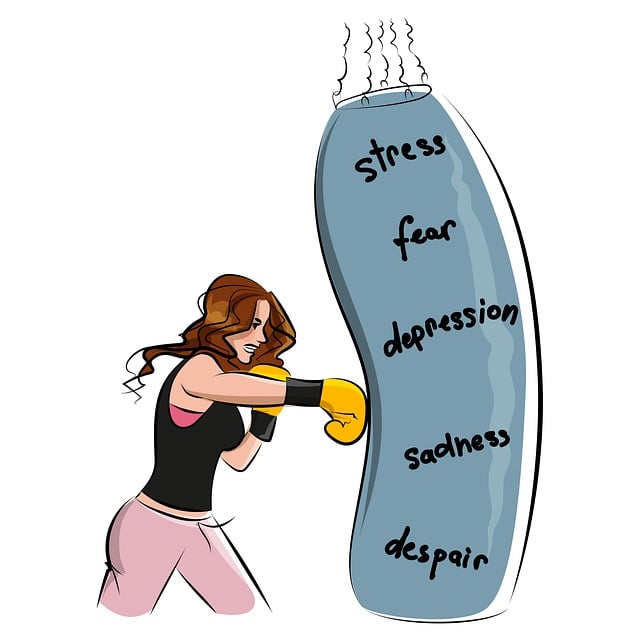How Psychotherapy Can Help Improve Relationships and Communication

Healthy relationships rely on effective communication, emotional understanding, and mutual respect. However, many people struggle with conflicts, misunderstandings, and emotional barriers that prevent them from maintaining strong relationships. Whether it’s between romantic partners, family members, friends, or colleagues, poor communication can lead to resentment, frustration, and emotional disconnection. Psychotherapy provides a structured and supportive environment where individuals and couples can develop healthier communication patterns, resolve conflicts, and build stronger emotional bonds. By addressing underlying emotional issues and teaching effective communication strategies, therapy helps people improve their relationships in meaningful ways. Understanding the Role of Psychotherapy in Relationships Psychotherapy is not just for individuals struggling with mental health conditions—it is also highly effective for improving interpersonal relationships. Through therapy, people learn how to: By working with a trained therapist, individuals and couples can identify negative communication patterns and behavioral habits that may be harming their relationships and replace them with healthier alternatives. Common Relationship Challenges That Psychotherapy Can Address Poor Communication Patterns Many conflicts arise from miscommunication, misunderstandings, or lack of communication altogether. Psychotherapy helps individuals recognize unhealthy patterns such as: Therapists teach strategies like active listening, clear expression of needs, and conflict resolution techniques, which help foster more open and effective communication in relationships. Unresolved Conflicts and Resentment Long-standing conflicts can create emotional distance in relationships. People may struggle to forgive, let go of grudges, or address recurring issues. Therapy helps by: By addressing unresolved tensions, psychotherapy allows relationships to heal and move forward in a healthier way. Emotional Disconnection and Lack of Intimacy Many relationships suffer from emotional detachment, where partners, family members, or friends stop sharing their feelings and needs. This can lead to feelings of loneliness, frustration, and neglect. Therapy helps by: Restoring emotional connection is crucial for long-term relationship satisfaction and happiness. Trust Issues and Betrayal Trust is the foundation of any healthy relationship. When trust is broken—whether through infidelity, dishonesty, or betrayal—it can be difficult to rebuild. Psychotherapy provides a safe space for healing and rebuilding trust by: With time and professional guidance, relationships can recover from trust-related challenges and become stronger than before. Difficulty in Expressing Emotions Some people struggle to express their feelings due to fear of rejection, past trauma, or cultural conditioning. This emotional suppression can lead to frustration, misunderstandings, and emotional isolation. Therapy helps by: Learning to communicate emotions effectively fosters deeper emotional intimacy and stronger relationships. Key Psychotherapy Approaches for Improving Relationships Different psychotherapy techniques can be used to enhance communication and strengthen relationships. Some of the most effective approaches include: Cognitive Behavioral Therapy (CBT) CBT helps individuals recognize and change negative thought patterns that impact relationships. By challenging unhelpful beliefs and adopting healthier behaviors, people can: Emotionally Focused Therapy (EFT) EFT is commonly used in couples therapy and helps partners identify their emotional needs and attachment styles. This therapy focuses on: Gottman Method Couples Therapy This evidence-based approach focuses on strengthening relationships through communication and emotional connection. It teaches: Family Therapy For relationships involving parents, siblings, or extended family members, family therapy helps address dysfunctional dynamics, generational trauma, and communication breakdowns. It: Mindfulness-Based Therapy Mindfulness techniques help individuals become more present and aware in their interactions. This therapy: Final Thoughts Psychotherapy is a powerful tool for improving relationships and communication. By identifying negative patterns, resolving conflicts, and fostering emotional intimacy, therapy helps individuals build healthier, more fulfilling connections with their loved ones. Whether addressing romantic, family, or friendship challenges, psychotherapy provides the necessary guidance to develop stronger, more meaningful relationships. For anyone struggling with communication difficulties or relationship conflicts, therapy offers the support and strategies needed to create positive, lasting changes.
Is TMS Right for You? Understanding the Eligibility and Benefits

Transcranial Magnetic Stimulation (TMS) is gaining traction as a groundbreaking treatment for mental health conditions, particularly for those who have not responded well to traditional therapies. But how do you know if TMS is right for you? Understanding the eligibility criteria and the benefits of this innovative approach can help you make an informed decision about your mental health care. TMS therapy is a non-invasive procedure that uses magnetic fields to stimulate specific areas of the brain associated with mood regulation. By targeting the prefrontal cortex—often underactive in individuals with depression—TMS helps restore normal brain activity and alleviate symptoms. Unlike medications, which affect the entire body, TMS is localized and doesn’t involve systemic side effects, making it an appealing option for many. Who Can Benefit from TMS Therapy? Individuals with Treatment-Resistant Depression One of the primary uses of TMS therapy is for people with major depressive disorder (MDD) who haven’t found relief through antidepressants or psychotherapy. Studies show that approximately two-thirds of patients experience significant improvement or complete remission of symptoms after TMS. Those Seeking Non-Medication Alternatives For individuals who cannot tolerate the side effects of medications, such as weight gain, fatigue, or sexual dysfunction, TMS offers a drug-free solution. It’s particularly beneficial for patients who prefer a non-invasive approach to treatment. Patients with Anxiety Disorders While TMS is most commonly associated with depression, it’s also being used to treat anxiety disorders, including generalized anxiety disorder (GAD) and obsessive-compulsive disorder (OCD). By targeting overactive brain regions responsible for anxiety, TMS helps reduce symptoms and improve overall mental well-being. Individuals with Post-Traumatic Stress Disorder (PTSD) TMS has shown promise in alleviating symptoms of PTSD, such as intrusive thoughts, nightmares, and hypervigilance. By modulating neural circuits, TMS helps individuals process trauma more effectively and regain control over their emotions. Patients with Neurological Conditions Emerging research suggests that TMS may be beneficial for neurological disorders like chronic pain, migraines, and even Parkinson’s disease. Although still under study, these applications highlight the versatility of TMS therapy. Eligibility Criteria for TMS Therapy While TMS is a safe and effective treatment, not everyone is a candidate. Below are the key factors that determine eligibility: Diagnosis of a Mental Health Condition TMS is FDA-approved for treatment-resistant depression and OCD. For other conditions, it may be considered off-label and requires consultation with a specialist to evaluate its suitability. Lack of Response to Traditional Treatments TMS is often recommended for individuals who have tried at least two antidepressant medications without significant improvement or who have discontinued medications due to intolerable side effects. No History of Seizures Because TMS involves magnetic stimulation, individuals with a history of epilepsy or seizures may not be suitable candidates. A thorough medical evaluation is conducted to assess this risk. No Metal Implants or Medical Devices TMS therapy is not recommended for individuals with implanted medical devices like pacemakers, cochlear implants, or metal plates near the treatment area. Magnetic fields can interfere with these devices. Commitment to the Treatment Schedule TMS therapy typically involves daily sessions, five days a week, for four to six weeks. Candidates must be able to commit to this schedule to achieve the best results. Benefits of TMS Therapy Non-Invasive and Painless TMS does not require surgery or anesthesia, and most patients describe the procedure as painless. There’s no recovery time, so individuals can resume their daily activities immediately after treatment. Minimal Side Effects Unlike medications, which can cause a range of side effects, TMS side effects are generally mild and short-lived. These may include scalp discomfort or mild headaches during the session. Long-Lasting Relief Many patients experience lasting improvement in symptoms even after completing the treatment course. Maintenance sessions can be scheduled if necessary to sustain results. Improved Quality of Life By alleviating symptoms of mental health conditions, TMS allows individuals to regain focus, energy, and motivation, improving their overall quality of life. The Bottom Line TMS therapy offers a ray of hope for individuals struggling with mental health conditions, particularly those who haven’t responded well to traditional treatments. With its non-invasive nature, minimal side effects, and high success rates, TMS is an effective and life-changing option for many. If you’re considering TMS, consult a mental health professional to discuss your symptoms, medical history, and treatment goals. Together, you can determine if TMS is the right path for your recovery journey.
How Is Spravato Nasal Spray Different Than Ketamine Infusion?

For individuals struggling with treatment-resistant depression (TRD), both Spravato nasal spray and ketamine infusion therapy have emerged as groundbreaking treatments offering hope. While both are derived from ketamine and show remarkable effectiveness, they differ in their delivery method, composition, and administration process. Understanding the distinctions between Spravato and ketamine infusions can help individuals make informed decisions about which treatment might best suit their needs. In this blog post, we’ll break down the key differences, from how they work to their safety, cost, and accessibility. An Overview of Spravato Nasal Spray Spravato is the brand name for esketamine, a derivative of ketamine. It was approved by the FDA in 2019 specifically for treatment-resistant depression when used alongside an oral antidepressant. Administered as a nasal spray, Spravato is designed to be more convenient and less invasive than traditional IV ketamine infusions. Esketamine, the active ingredient in Spravato, is more potent than regular ketamine, which means smaller doses are required to achieve similar therapeutic effects. Ketamine Infusion Therapy: A Brief Introduction Ketamine infusion therapy involves administering racemic ketamine intravenously (IV). Racemic ketamine contains two mirror-image molecules: R-ketamine and S-ketamine. Both molecules work on the brain’s NMDA receptors, but the combined effect helps restore mood regulation pathways. IV ketamine therapy has been used for decades as an off-label treatment for depression, anxiety, PTSD, and suicidal thoughts. It is not FDA-approved for mental health conditions, but numerous studies have demonstrated its rapid and effective results. Key Differences Between Spravato and Ketamine Infusions Composition Administration FDA Approval Time to Effectiveness Cost and Insurance Coverage Duration and Treatment Schedule Which Treatment Is Right for You? The choice between Spravato nasal spray and ketamine infusion depends on several factors, including: Consulting with a psychiatrist or mental health professional can help determine which treatment aligns with your needs. Safety and Side Effects Spravato Common side effects include: Ketamine Infusion Side effects are similar to Spravato and include: Both treatments require monitoring in a clinical setting to ensure safety and minimize risks. The Bottom Line Both Spravato nasal spray and ketamine infusion therapy are revolutionary treatments for individuals suffering from treatment-resistant depression. While they share similarities, their key differences in composition, administration, FDA approval, and cost make them unique options. Spravato offers a convenient, insurance-backed nasal spray treatment, while IV ketamine provides rapid relief with a broader spectrum of therapeutic effects. By understanding these differences, you can work with your healthcare provider to determine which option will best support your mental health journey.
Inpatient vs. Outpatient Mental Health Services: What’s the Difference?

Mental health care is essential for individuals navigating mental health challenges, offering varied services to meet unique needs. Among these services, inpatient and outpatient mental health care are two primary options. Understanding their differences can help individuals and families make informed decisions about care. What Are Inpatient Mental Health Services? Inpatient mental health services provide intensive, round-the-clock care in a hospital or specialized mental health facility. These services are designed for individuals who require immediate and comprehensive support to stabilize severe mental health conditions. Key Features of Inpatient Services: Who Benefits Most from Inpatient Care? What Are Outpatient Mental Health Services? Outpatient mental health services are less intensive than inpatient care and allow individuals to live at home while receiving treatment. These services are ideal for individuals with manageable symptoms or those transitioning from inpatient care. Key Features of Outpatient Services: Who Benefits Most from Outpatient Care? Key Differences Between Inpatient and Outpatient Services Aspect Inpatient Care Outpatient Care Living Arrangement On-site at a hospital or facility At home Intensity High Moderate to low Duration Short-term (days to weeks) Long-term (weeks to months) Cost Higher Lower Focus Stabilization and crisis intervention Maintenance and ongoing therapy How to Decide Which Is Right for You Choosing between inpatient and outpatient care depends on several factors, including the severity of symptoms, personal safety, support systems, and treatment goals. Consulting a mental health professional is crucial to assess needs and create a tailored treatment plan. Questions to Consider: Summing Up Both inpatient and outpatient mental health services play critical roles in addressing mental health needs, offering unique benefits tailored to individual circumstances. Inpatient care provides immediate, comprehensive support for acute situations, while outpatient care emphasizes long-term management and flexibility. Understanding these differences is the first step toward seeking the help you or your loved one needs. If you’re unsure which option is best, reach out to a licensed mental health professional for guidance. Remember, taking the first step to seek help is a courageous act of self-care.
